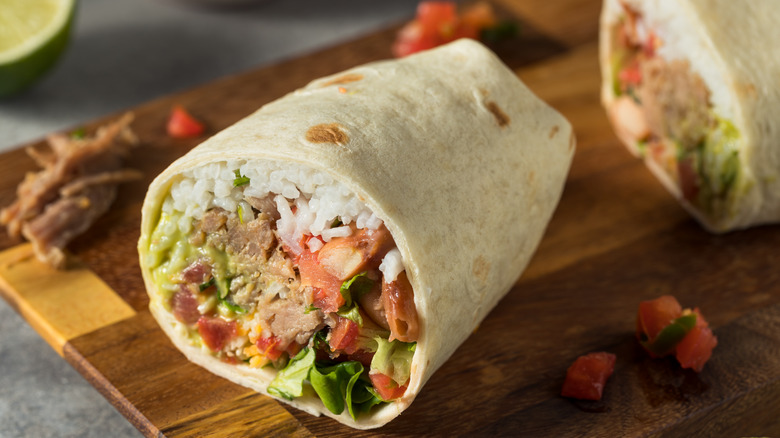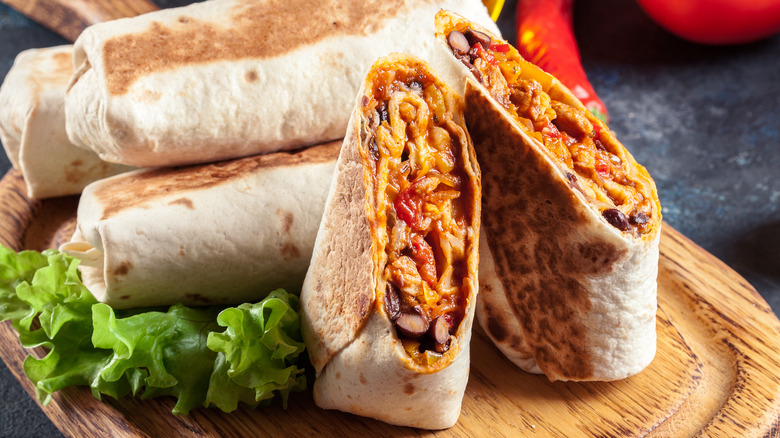The Best Way To Season Burritos For Full Flavor In Every Bite
The burrito, made of beans and rice wrapped in a delicious flour tortilla, is loved in restaurants, fast-food chains, and at home across North America. With delectable varieties like the breakfast burrito, the deep-fried chimichanga, and the enchilada-sauce-smothered wet burrito, it is a staple of Mexican and Southwestern U.S. cuisines (via Britannica).
The name burrito, meaning "little donkey," has many legends regarding its origins (per MasterClass). Some of the most popular – there are many others – of course, center around the food's namesake: the donkey. According to Britannica, the burrito most likely originated in the Sonoran region of Mexico. Some think its name comes from the bedrolls that miners would attach to the backs of their donkeys. Those who align themselves with the mining theory cite that Chinese miners also worked in the Sonoran mines and guess that the burrito is the Mexican version of the egg roll. Others contend that the burrito is named after the early burrito vendors who carried the tortilla-wrapped treats in baskets attached to donkey saddles.
According to Vox, early burritos were most likely filled with leftovers. Soon beans and rice became the traditional burrito ingredients. It wasn't until the Mission-style burritos of San Fransicsco's El Faro or Taqueria La Cumbre, depending on who you ask, that the burrito became the massive, deliciously overstuffed tortillas bursting with ingredients like avocado, cheese, avocado, and crema, that we know today, writes Bon Apétit.
Season each ingredient for the best burrito
With the creation of the giant stuffed-to-the-brim Mission-style burrito, the possibilities for burrito ingredients seem endless. With that, the Washington Post warns that the infinite flavors and additions to the burrito create infinite ways to mess up a burrito. Consider how many ingredients you'd like to add to reduce your chances of making a disappointing burrito. Try not to overdo it.
Once you've selected your ingredients, cook and season each one individually, suggests Auguste Escoffier School of Culinary Arts, meaning that you pay close attention to how you flavor the beans, rice, meat, or veggies. Doing so will ensure that each bite packs a satisfying punch. For example, you can add well-rounded flavor to your rice by cooking it in broth and adding herbs and spices like garlic, cumin, chili peppers, and bay leaves. Typical spices for burrito meat and vegetables include salt, garlic, and pepper, as well as paprika, cumin, and cayenne pepper, writes Spice Rally.
Don't forget to consider your sauces, advises MasterClass. Traditional toppings include salsa, hot sauce, guacamole, Mexican crema, or sour cream. For added flavor, use just a bit of fresh herbs like cilantro, jalapeños, or pickled onions, suggests the Washington Post. By ensuring that each ingredient is flavored to a satisfying degree, you'll make each bite of your burrito delicious.

